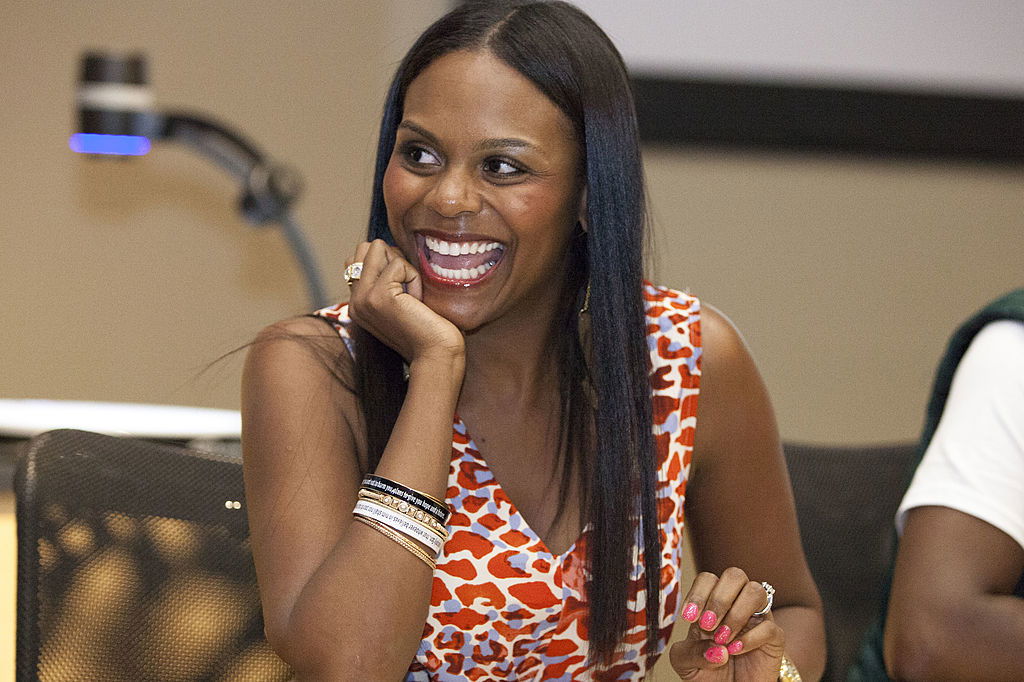The art of conversation can be a valuable skill. You talk to your spouse, mentor, child, business partner, coworkers—and typically anyone else you meet. When you learn the art of conversing, your life might benefit in many areas. Strong conversation skills can help you build more meaningful connections in your life. These skills can help you do things like expand your social circles, improve relationships, start a business or advance your career.
Good communicators know how to start and carry a conversation, but most of us can use a little help. With that in mind, let’s take a look at some practical tips that will help you rule the art of conversation.
Related: Jim Rohn’s 8 Ways to Master the Art of Communication
Getting Started With A Great Conversation
Being a great communicator means adapting yourself to the conversation at hand. Sometimes, that means that you’ll have to carry on a conversation. Other times, you’ll simply have to ask the right questions and listen attentively.
However, to master the art of conversation, consider these three fundamentals:
- Introduction and the “get-to-know-each-other.” How you open can help you “jumpstart” the conversation and lead it in a successful direction.
- Rapport building. Starting with small talk and going deeper with questions can help you build a connection or relationship with the other person (or people).
- Steering the conversation. The balance of speaking and listening in a conversation is important. Being able to change the subject or steer the conversation in a different direction can keep it flowing (or help you end it gracefully).
Let’s jump into some simple tips that’ll help you improve your conversation skills both personally and professionally.
1. Lead With A Compliment.
One powerful way to get people talking is to compliment them—it’s a positive and engaging way to start a conversation.
Not only does a compliment provide a perfect opening line and a possible door for discussion, but it also makes the person feel good about themselves. Starting the conversation on a positive note can also help keep the conversation going.
Your compliments should be sincere and genuine. Keep in mind that the more specific your compliment is, the better. For example, instead of commenting that a person is well-dressed, you could say something like, “Your shoes are cute.” It’s concise, sincere and specific—and now you’ve opened the conversational door because your partner has something to talk about.
2. Be Kind, Friendly And Use The Open Body Language.
Showing kindness and having a friendly attitude is also key to having conversations. Your level of friendliness can make or break the receptiveness of the other party involved. Walk into the conversation with a genuine smile and open body language. Keep yourself open, receptive and smiling politely for as much of the conversation as possible.
Try not to cross your arms, appear distracted or let your eyes wander. Focus on the other person. Maintain eye contact when you can, and go out of your way to show that you’re genuinely interested in what they have to say.
Related: How to Spark More Meaningful Professional Relationships
3. Embrace Small Talk.
Small talk has many benefits and it can lead the way to deeper conversation. Much in the way that a car must gradually accelerate to a certain speed rather than hitting 60 mph instantaneously, small talk lays the foundation for delving into deeper subjects.
Fortunately, small talk topics are easy to pull—you can talk about the event you’re attending, comment on a food or drink item, discuss the newest Netflix hit show, point something out about the venue or if you’re desperate, you can talk about the weather. These are all shared experiences that anyone can relate to, so they can work for any individual. Finding common ground is a key conversation skill to build connection.
Related: At a Loss for Words? 25 Ways to Master the Art of Small Talk
4. Ask Good Questions.
Psychologists believe that high-quality discussions can have many benefits, including improving our moods, leading to better connections and relationships, and more productive conflict resolution. So, if you want to move from small talk to deeper conversation, look for opportunities. However, don’t try to abruptly change gears and talk about something deep or substantial; instead, patiently wait for the opportunity to present itself. That’s where the questions come in.
The art of conversation involves knowing how to ask thoughtful questions. Questions are a powerful way to help you find out more about the other person in a conversation. Good questions are concise, open-ended and clear. If you’re wondering how to ask great questions, you can get started by being genuinely curious, using emotional intelligence and having good self-awareness of their own thoughts and perspectives. Preparing with follow-up questions can also help the conversation flow.
5. Show Empathy And Engage In Active Listening.
A major part of excelling at the art of conversation isn’t about speaking at all, it’s about being a good listener. If you go into a conversation and immediately begin dominating it with your own anecdotes, comments and explanations, the other person may immediately become disinterested. Instead, try to keep the focus on them as much as possible.
Engage in active listening and ask questions as needed. Try to listen without judgment, reflect on what you’ve heard the other person say and summarize what they’ve said to help aid in understanding. It’s also important to minimize distractions, such as putting away your phone. Showing empathy for what the other person is saying helps to build better connections because they feel seen and heard.
If you find that the conversation is dwindling, however, or if the person simply doesn’t respond well to questions, feel free to jump in yourself when there’s a natural break or pause in the conversation. Tell an amusing story or a personal anecdote—it may be exactly what the conversation needs to keep going.
6. Keep It Positive.
Another key to having great conversation skills is to try to keep the conversation as positive and approachable as possible. If you immediately start complaining about your job or talking about what’s wrong with your life, people will likely want to end the conversation. They’ll be far more likely to stay if you tell a joke or an amusing story.
People tend to gravitate toward others with a positive attitude, so keep your conversational material positive. If you struggle with this, try memorizing a handful of good jokes or stories to use when you meet new people.
Related: 7 Keys to a Flawless Conversation
Tips to Master The Art Of Conversation At Work
While many tips can apply to both personal and professional conversations, some extra tips can be beneficial to becoming an expert at the art of conversation at work. Great conversations can mean greater transparency, better communication and collaboration, and more productive conflict resolution.
- Identify your goals or motives. When you go into a workplace conversation with a specific goal or outcome in mind, it can help you keep the conversation on track and lead to more successful communication.
- Choose the right time. Consider the timing of the conversation. For lighter conversations to build rapport, for example, look for natural openings. Monday mornings people might want to discuss the week ahead, or Friday afternoons they might be excited to talk about their weekend plans. If it’s a difficult workplace conversation, look for an opportunity where neither of you is stressed or rushed.
- Avoid controversial topics. When engaging in small talk, asking questions or starting conversations, steer clear of controversial issues.
- Make the information concise, specific and easy to understand. This can help avoid misunderstandings and wasted time.

Things to Avoid If You Want to Excel At The Art Of Conversation
If you want to have great conversations, learning how to avoid these common communication pitfalls can help.
Avoid Brightsiding
People do gravitate toward a positive attitude. But “brightsiding,” along the same lines as toxic positivity, involves making statements that dismiss another person’s feelings or experiences. It won’t facilitate conversations. When people are brightsided, they feel invalidated. Like toxic positivity, it can hurt your conversations.
If you’re in a conversation and people discuss a negative topic, respond in a way that’s empathetic and validating. To gracefully change the subject, first acknowledge what the other person is saying. Then you can redirect the conversation.
Don’t Automatically Give Advice
Sometimes people discuss a problem in a conversation, but that doesn’t mean they want a solution from you. Knowing how to navigate a conversation well involves understanding how to listen without giving advice. The other person may just be looking for a listening ear, empathy or validation. You can practice active listening and be compassionate. You can ask if the person wants help or feedback. You can also share a similar story or gently redirect the conversation. Knowing how to master the art of conversation can sometimes be knowing when to hold back and not give advice.
Don’t Interrupt The Person Speaking
Interrupting the other person instantly stops a conversation in its tracks. An interruption is not only impolite, it can communicate the idea that you don’t respect or value what the other person says. It can be frustrating at best, and can also indicate a lack of self-control on the part of the person doing the interrupting. In specific cases, such as in an emergency or if the speaker is insulating others, an interruption can be warranted.
Improve Your Conversations And Improve Your Life
A great conversation involves an authentic connection between two people. If you show a genuine interest in the other person, engage in active listening and ask questions to move the conversation to a deeper level, you’ll be well on the way to mastering the art of conversation. Remember to tailor your approach to the individual you’re speaking with; since everyone’s personalities are different, there’s not necessarily a one-size-fits-all approach. Yet by keeping it positive, focusing on the other person and avoiding common pitfalls, you can excel at having meaningful conversations.
Being a great conversationalist can go a long way. Whether it’s in your personal or professional relationships, you can build bridges, forge stronger connections and improve your life by mastering a few simple communication skills.
Photo by: Josep Suria/Shutterstock




